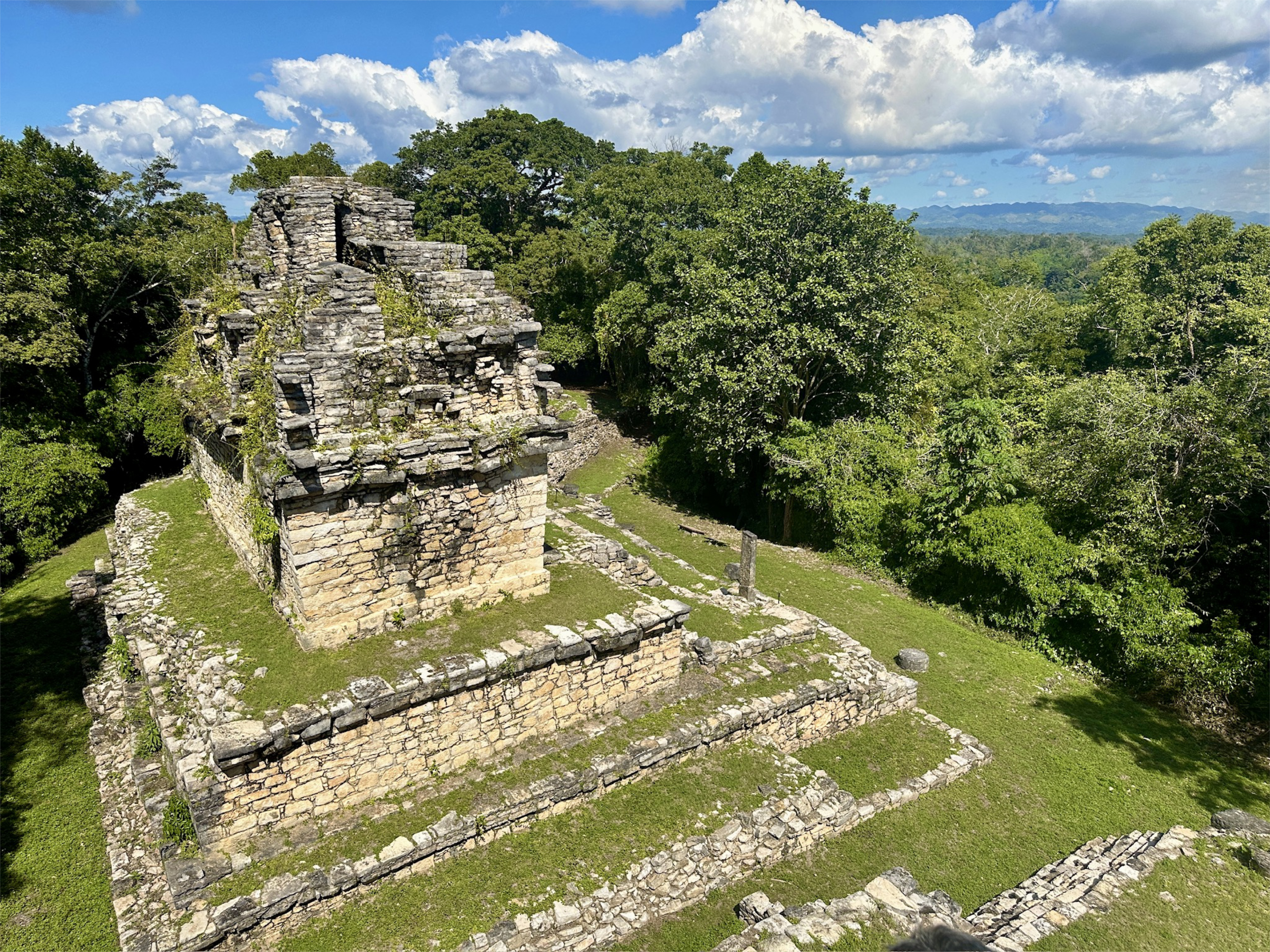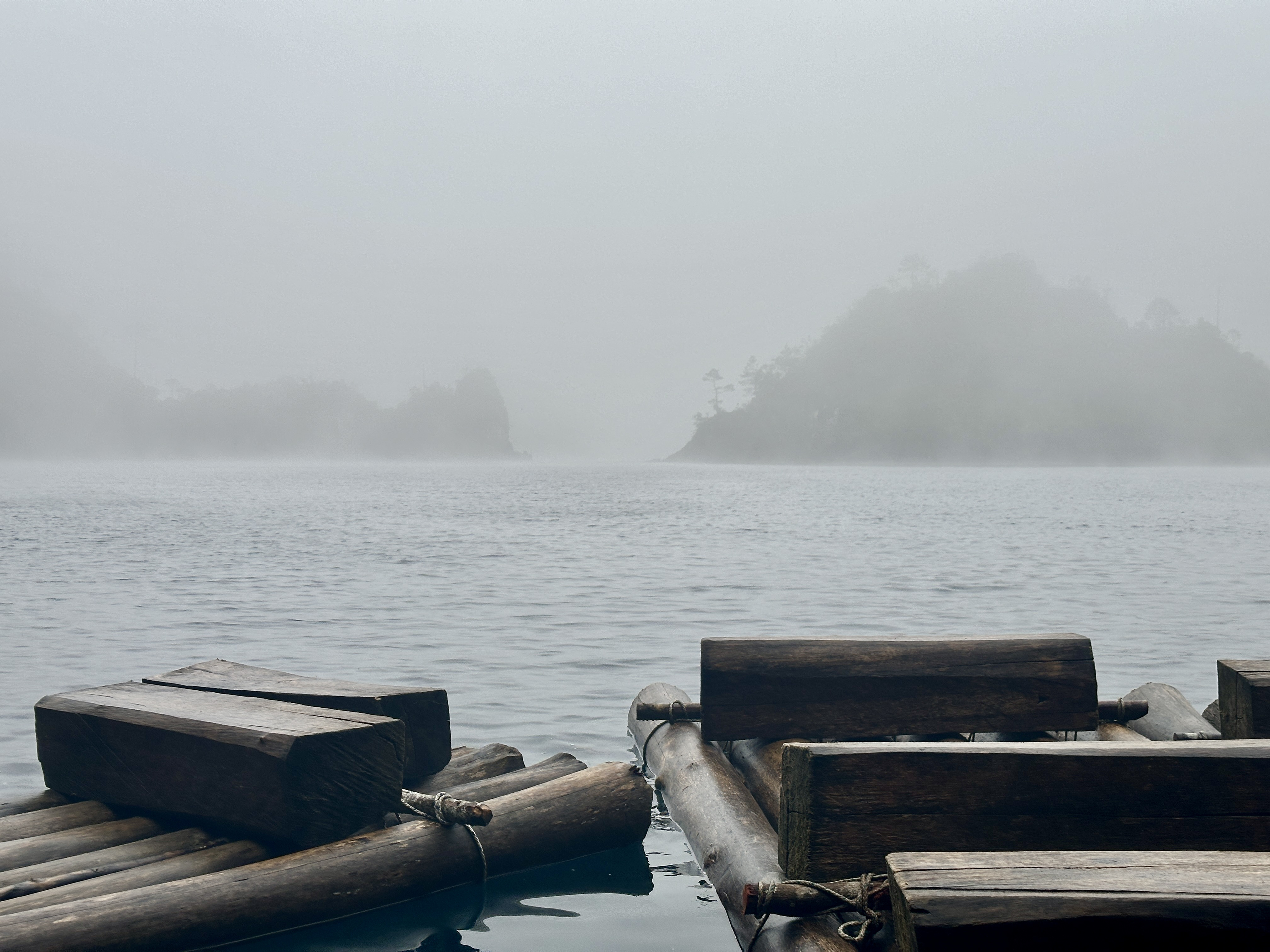Palenque: Exploring the Jewel of Maya Architecture
Region: North America
Country: Mexico
After exploring the remote ruins of Yaxchilan and the incredible murals of Bonampak , our 5-day journey through the Lacandon Jungle brought us to what many consider the crown jewel of Maya architecture: Palenque. While it may be more accessible than other sites we visited, there’s something undeniably magical about these ruins emerging from the misty jungle of northern Chiapas.
Key Takeaways
- Location: Northern Chiapas, near modern Palenque town
- Known For: Sophisticated architecture and Pakal’s tomb
- Time Needed: Full day recommended
- Highlights:
- Temple of Inscriptions
- Palace complex
- Temple of the Cross group
- Jungle setting
- Advanced water management systems
This site was part of our organized tour through the Lacandon Jungle. For tour options and current prices, see our recommended Chiapas tours .
First Impressions
We arrived at Palenque early in the morning, just as the mist was rising from the jungle. The air was thick with humidity, and the calls of howler monkeys echoed through the trees. Unlike Yaxchilan , where you arrive by boat, or Bonampak , where you need special transport, Palenque is relatively easy to access. But don’t let that fool you - this site is absolutely magnificent.
The Temple of Inscriptions
The first structure that caught my eye was the Temple of Inscriptions, rising majestically above the plaza. This pyramid-temple isn’t just architecturally impressive - it’s also the burial place of one of the Maya’s most famous rulers, K’inich Janaab’ Pakal (often called “Pakal the Great”). While the tomb itself is closed to visitors, just standing before this massive structure gives you a sense of its importance.
What makes this temple particularly fascinating is its sophisticated engineering. The Maya built a complex system of channels and drains inside the pyramid to prevent water damage to Pakal’s tomb - and it worked. When archaeologists discovered the tomb in 1952, it was perfectly preserved, complete with an enormous carved sarcophagus lid that has become one of the most iconic pieces of Maya art.

The Palace Complex
The Palace at Palenque is unlike anything else in the Maya world. It’s not just one building but a complex maze of courtyards, corridors, and rooms built on different levels. The most striking feature is its unique tower, which some archaeologists believe might have been used as an observatory.
Walking through the Palace, you can still see traces of the red paint that once covered its walls. The sophisticated water management system here is incredible - channels and aqueducts direct water flow throughout the complex, showing just how advanced Maya engineering was.
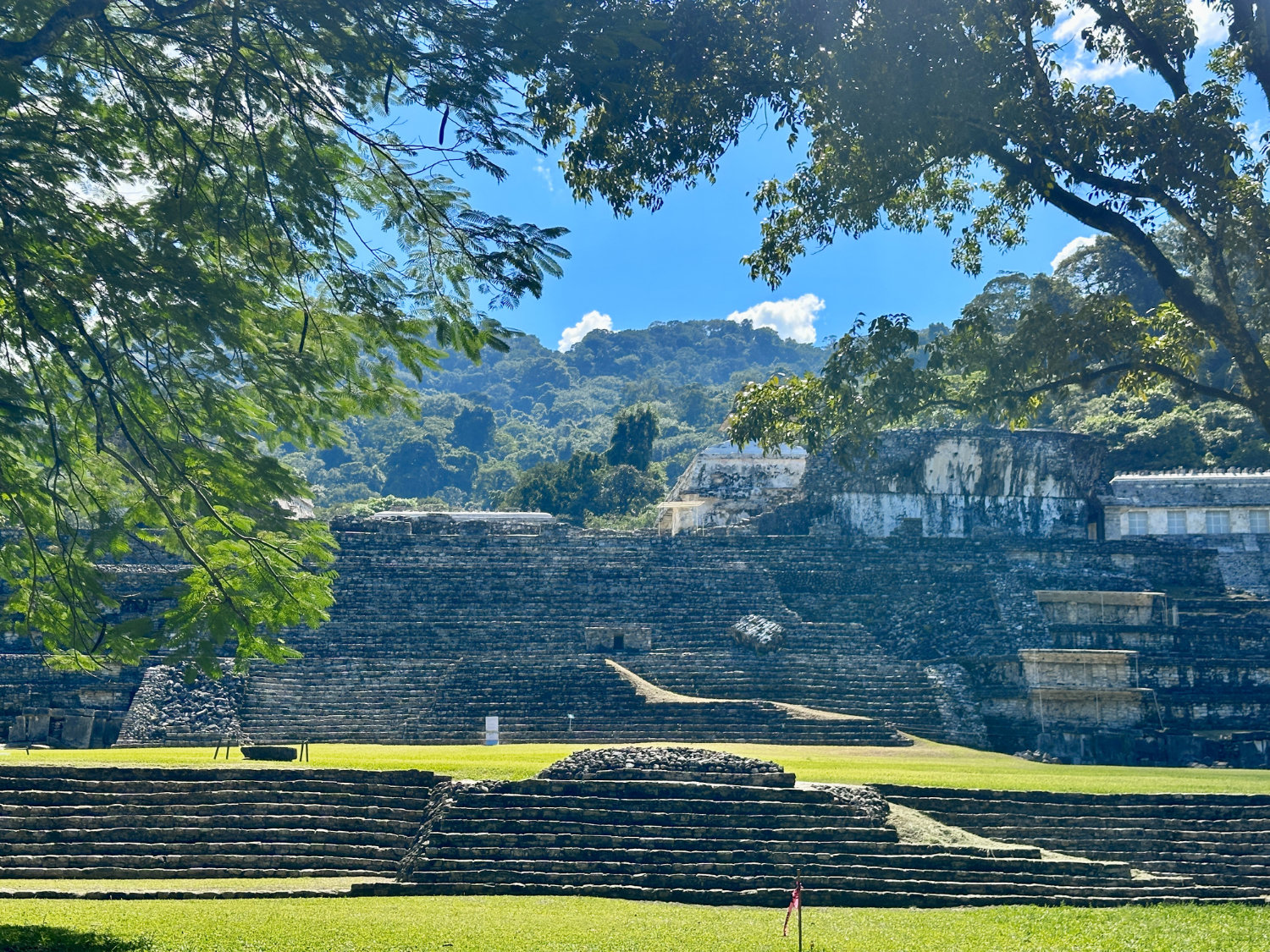
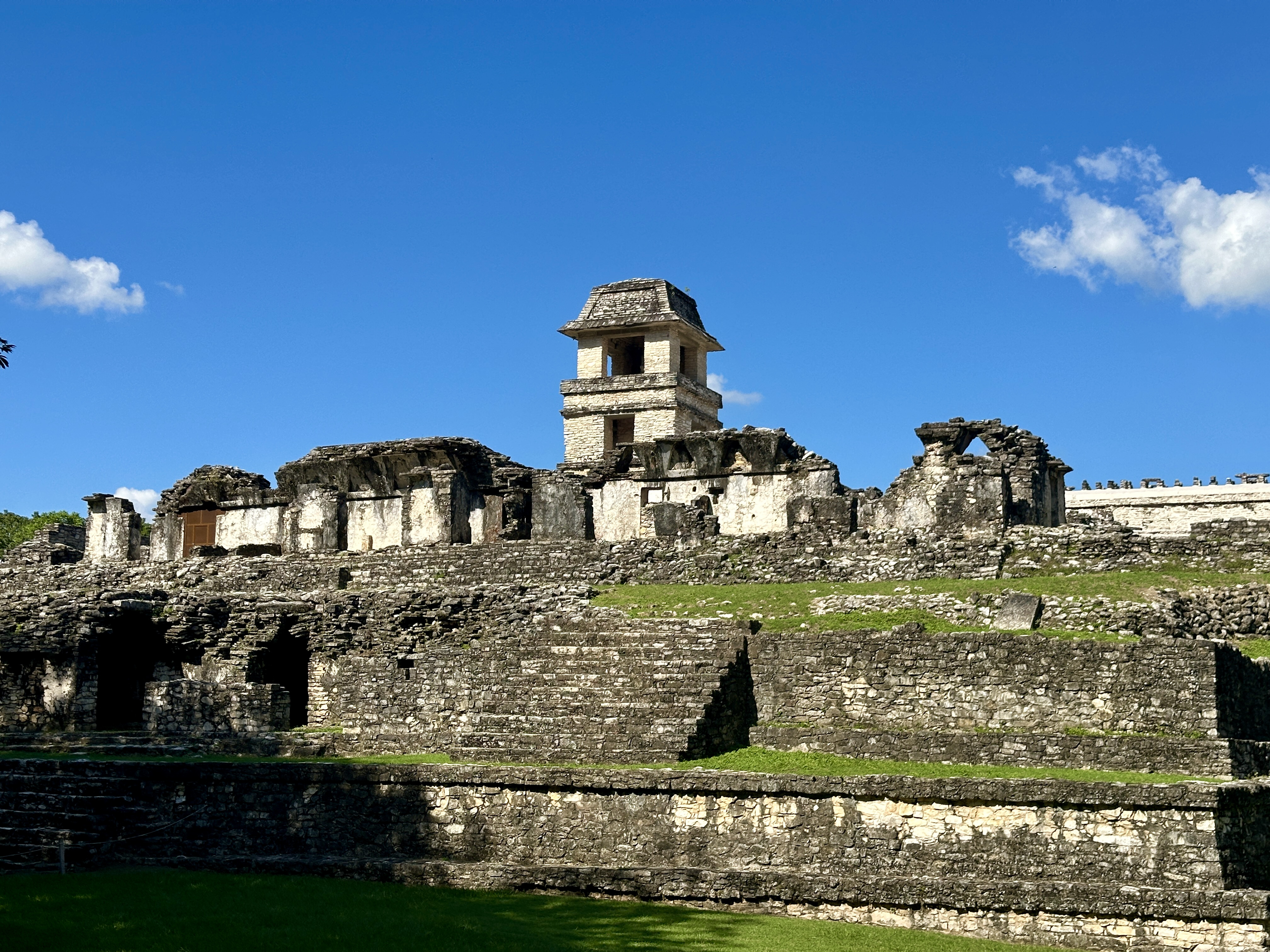
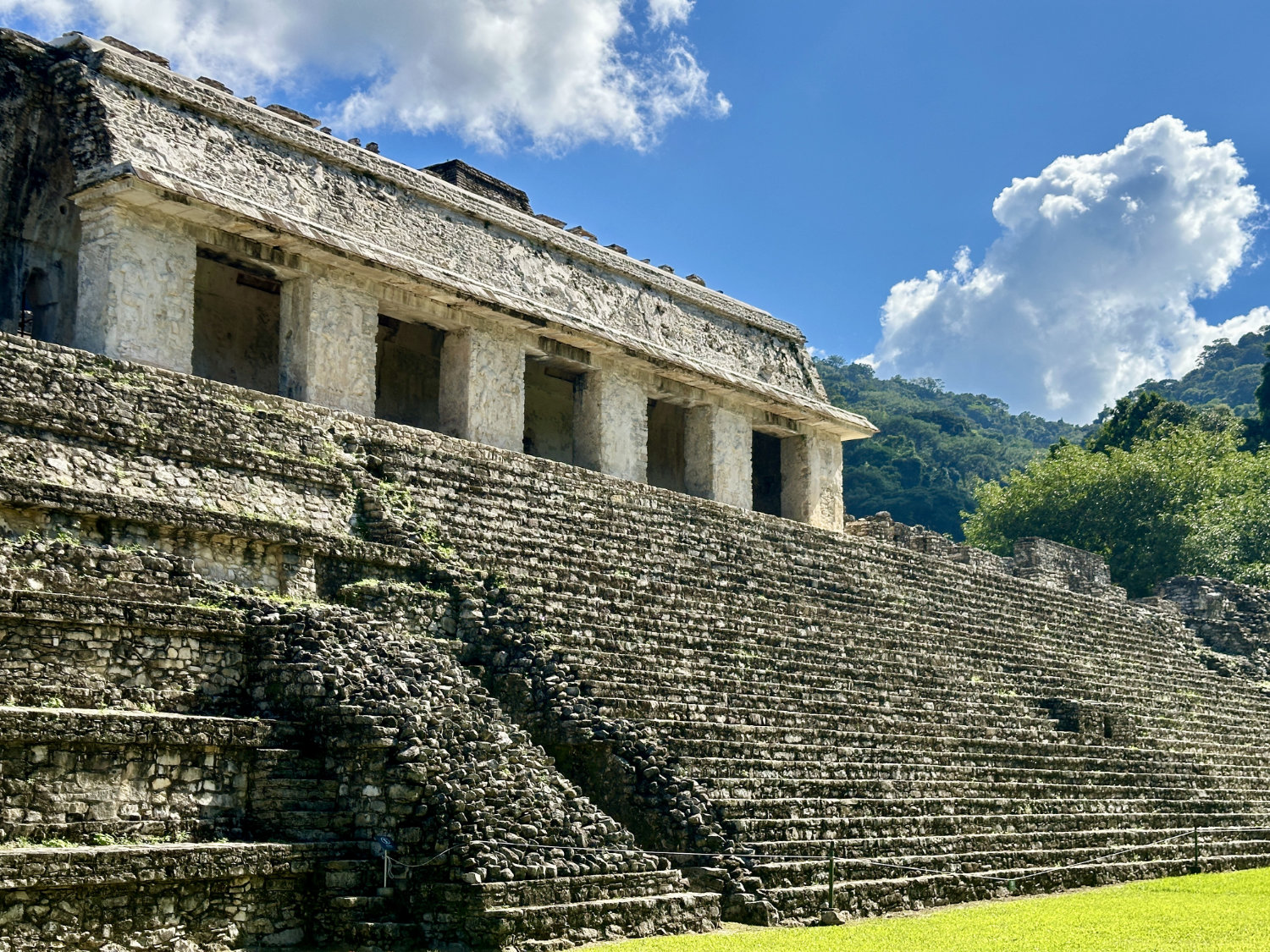
The Cross Group
Climbing up to the Temple of the Cross group requires some effort, but the view is worth every step. These three temples - the Temple of the Cross, Temple of the Sun, and Temple of the Foliated Cross - sit atop a natural hill, creating an impressive architectural ensemble.
Each temple contains detailed relief panels that tell the story of Pakal’s son, K’inich Kan B’alam II, and his right to rule. The craftsmanship is extraordinary - even after centuries, you can make out individual details in the carvings, from elaborate headdresses to hieroglyphic inscriptions.
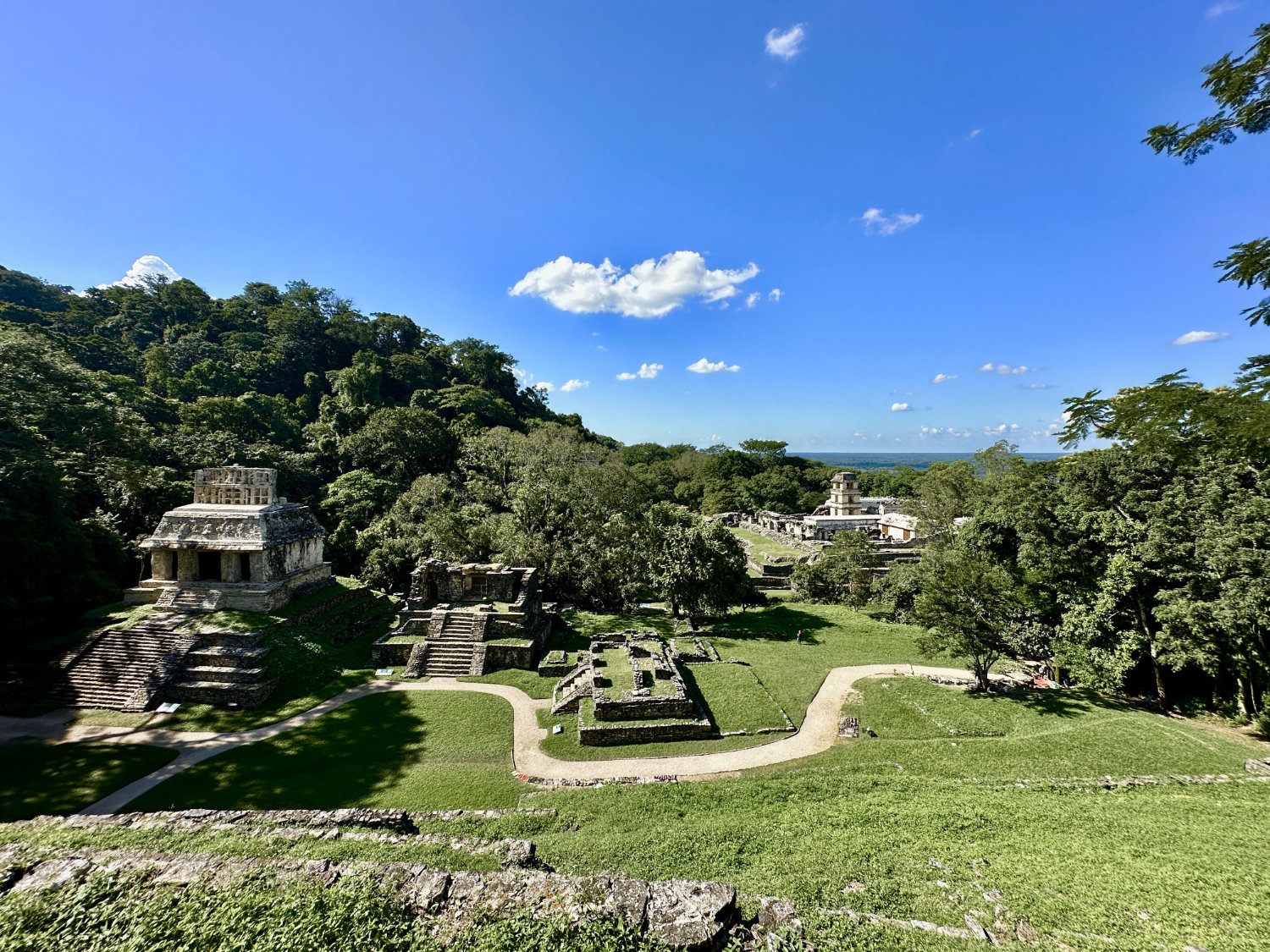
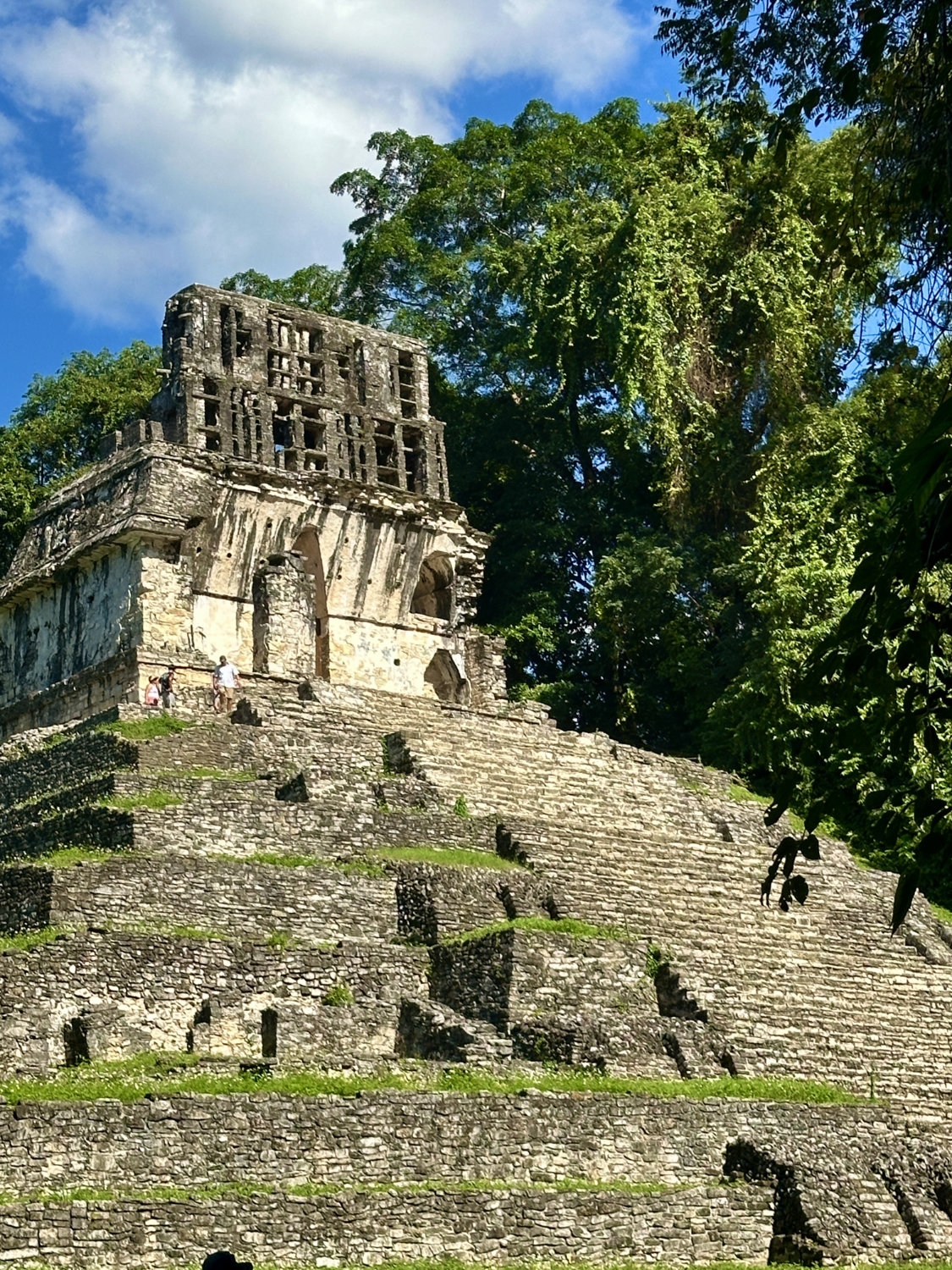
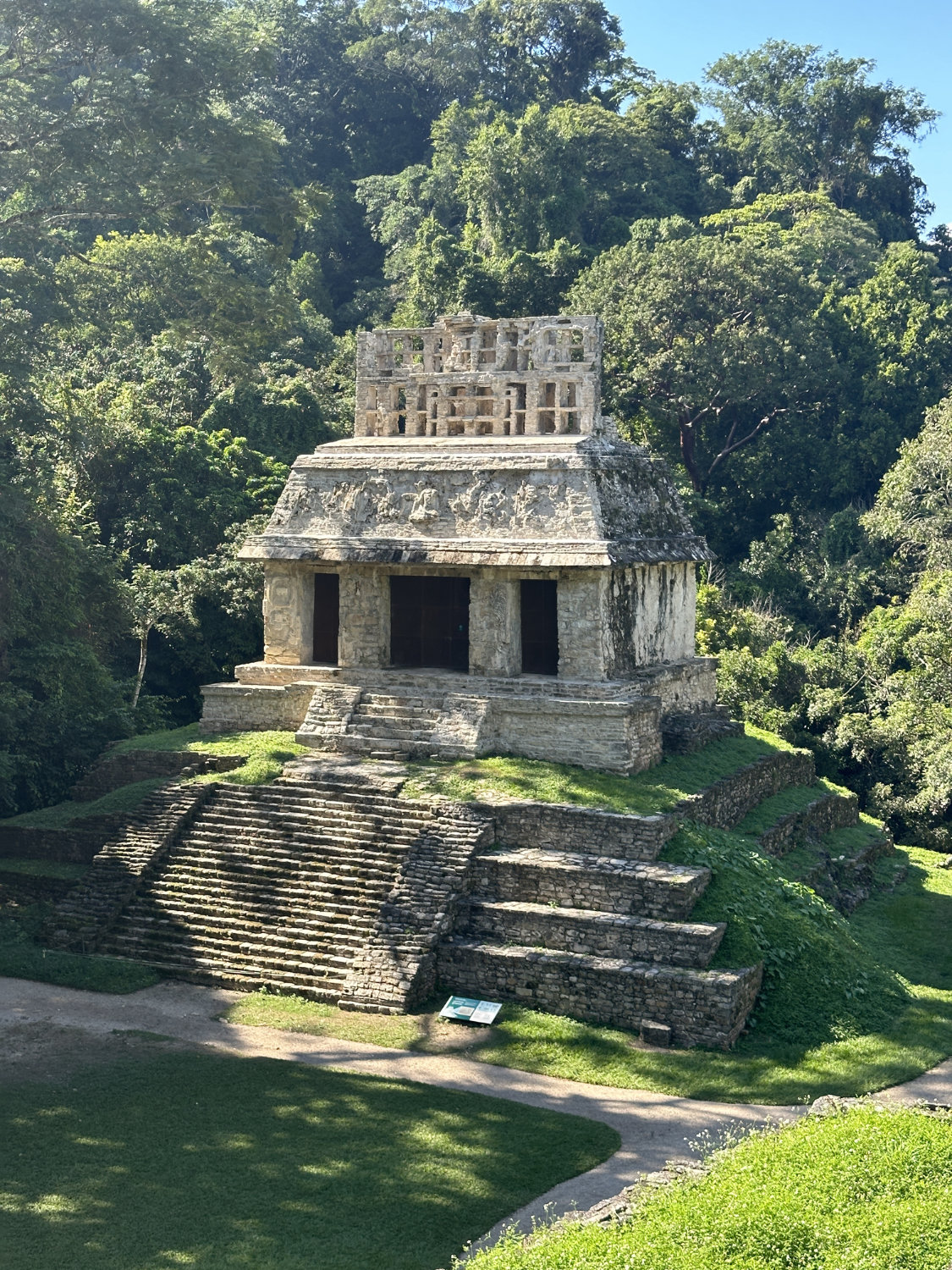
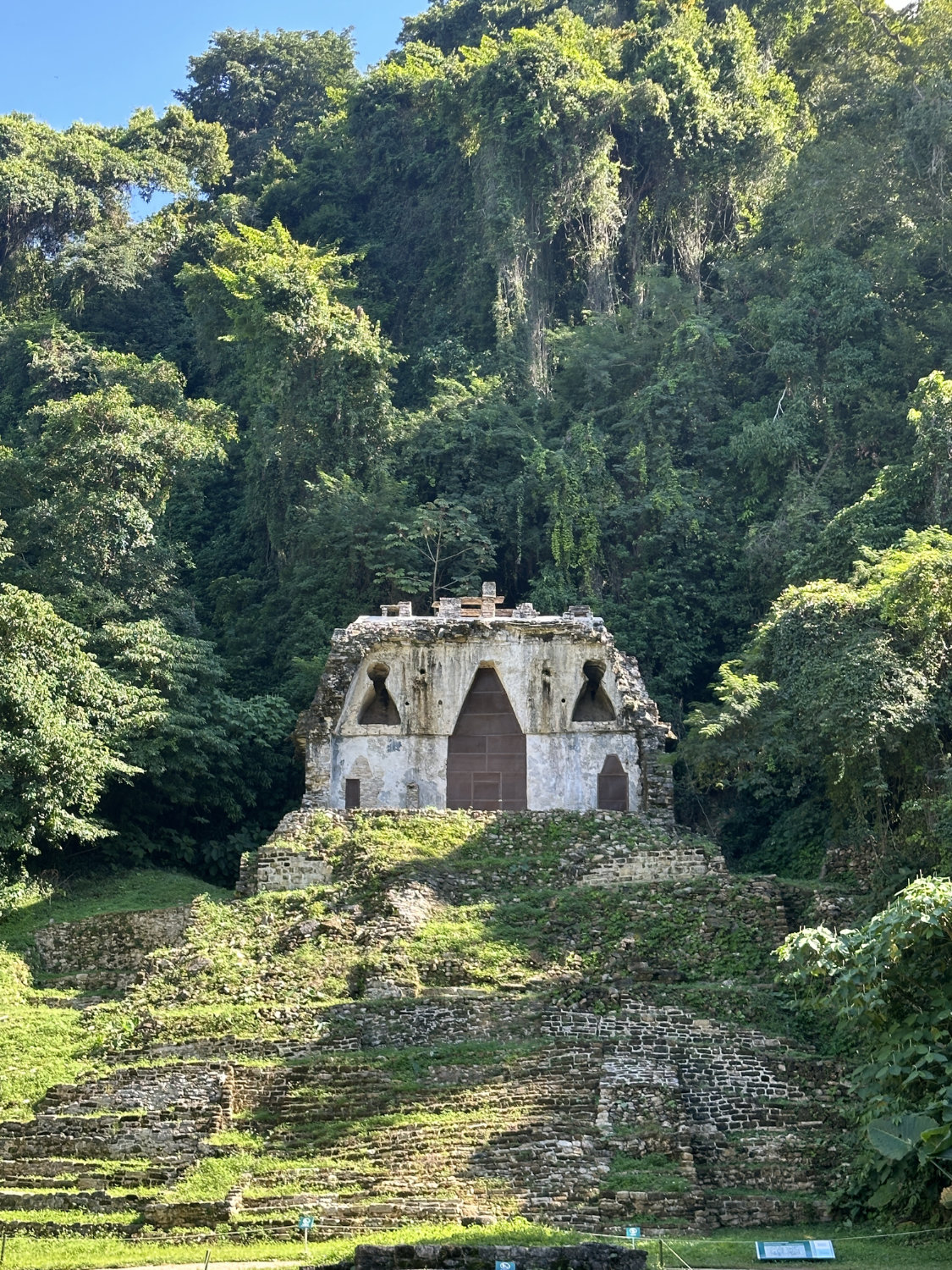
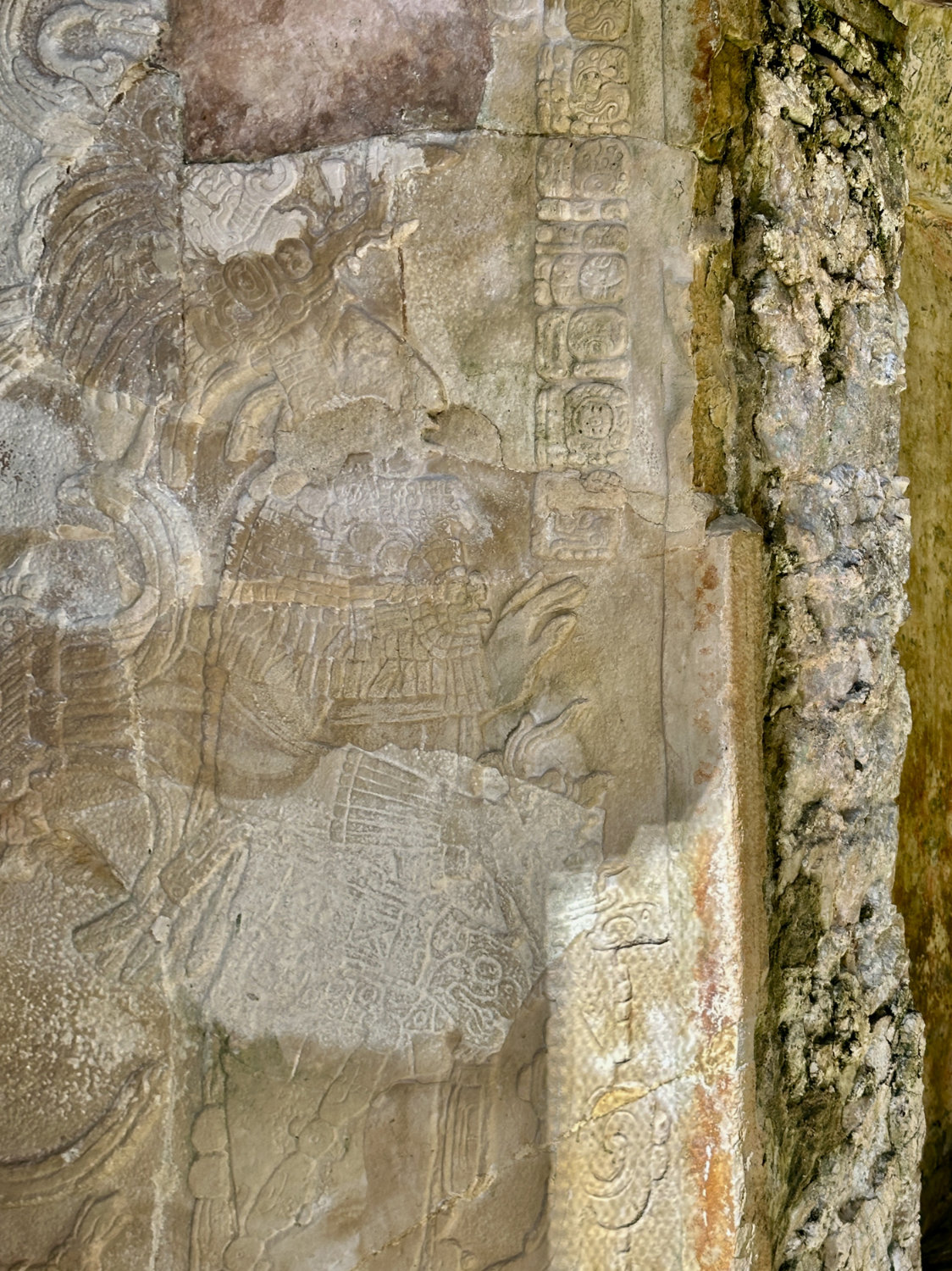
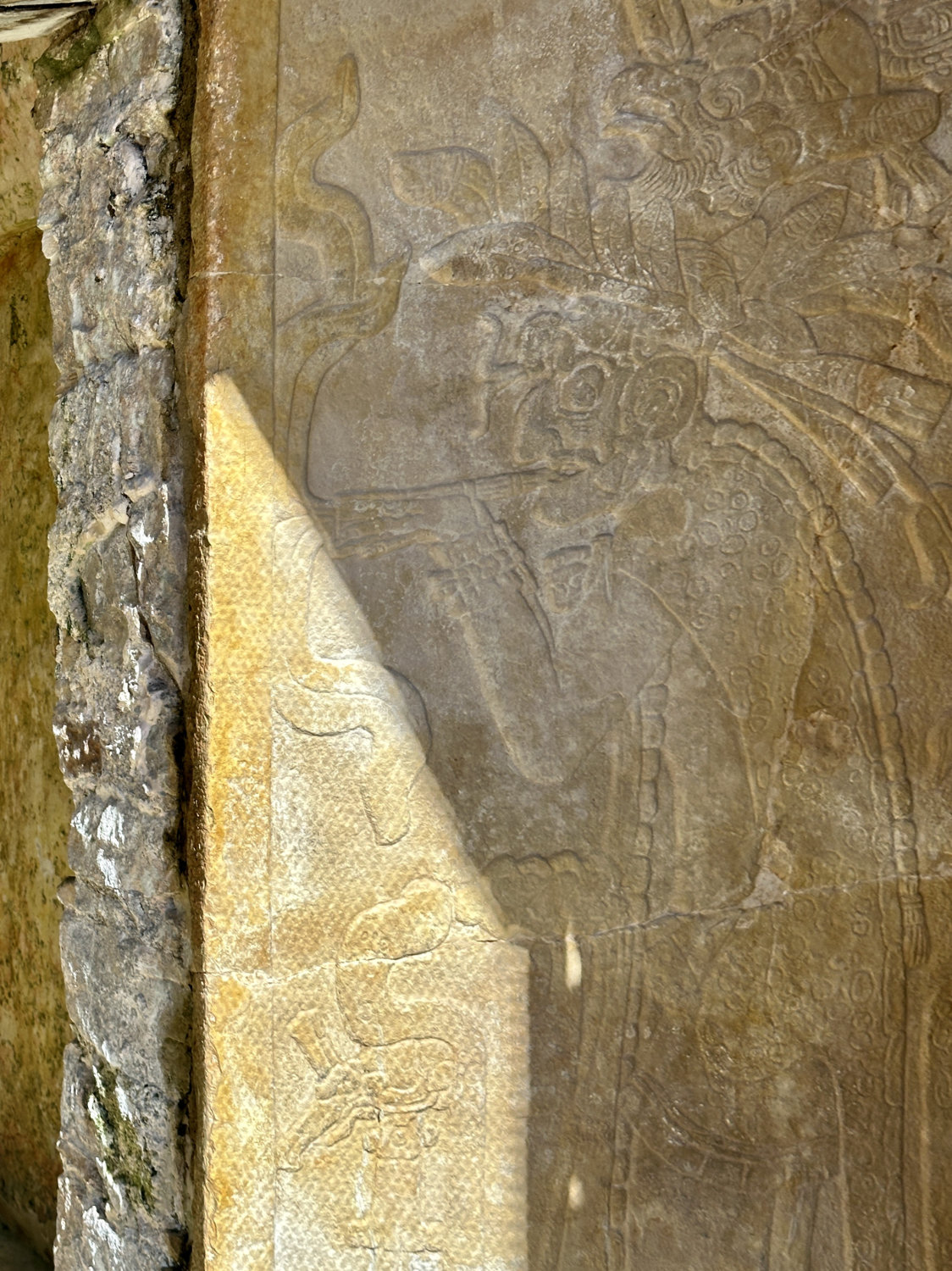
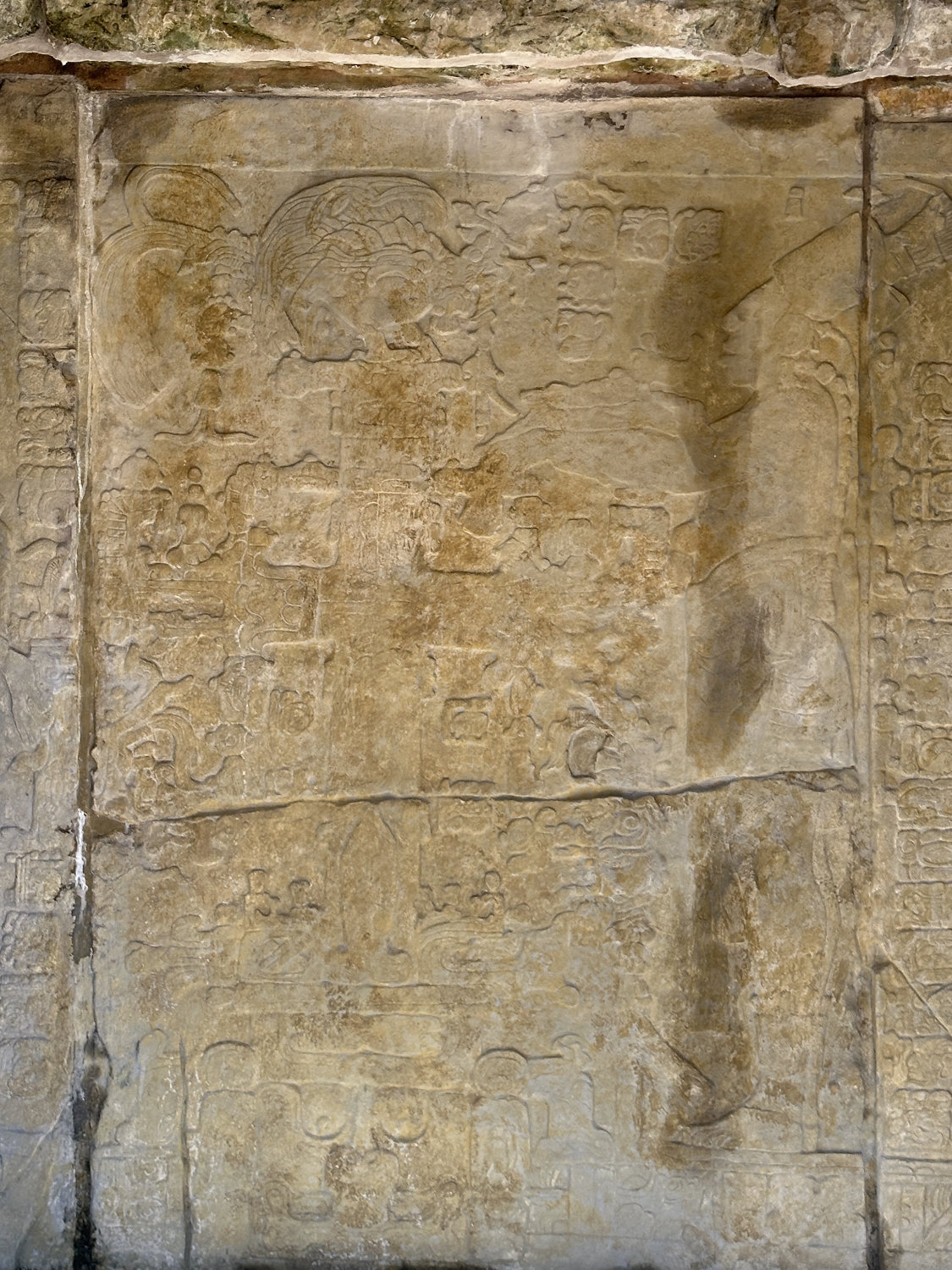
Hidden Gems
While the main structures get most of the attention, some of my favorite discoveries were in the less-visited areas:
The Aqueduct
The Maya built an impressive system of aqueducts to manage water flow through the site. You can still see one of the main channels, complete with a vaulted cover - an engineering feat that’s particularly impressive given the heavy rainfall this area receives.

Temple XIII
Next to the Temple of Inscriptions stands Temple XIII, a smaller but historically significant pyramid that held one of Palenque’s most intriguing discoveries - the tomb of the “Red Queen.” The tomb was found in 1994 when archaeologist Fanny López Jiménez noticed a small crack in the temple stairs that led to a hidden passageway.
Inside the burial chamber, archaeologists found a limestone sarcophagus containing the remains of a noble Maya woman. Her skeleton and the surrounding artifacts were completely covered in bright red cinnabar powder (mercury ore), earning her the name “Red Queen.” The tomb also contained two additional skeletons - believed to be servants sacrificed to accompany her in the afterlife.
The identity of the Red Queen has fascinated archaeologists for decades. While initially thought to be Pakal’s mother, DNA analysis suggests she was more likely Ix Tz’akbu Ajaw, Pakal’s wife. Her burial included elaborate jade jewelry, a funeral mask, pearl ornaments, and various ritual objects - clear indicators of her high status. Carbon dating places her death between 600-700 CE, and analysis revealed she lived to about 60 years old, enjoyed a meat-rich diet, and maintained remarkably healthy teeth for her age.
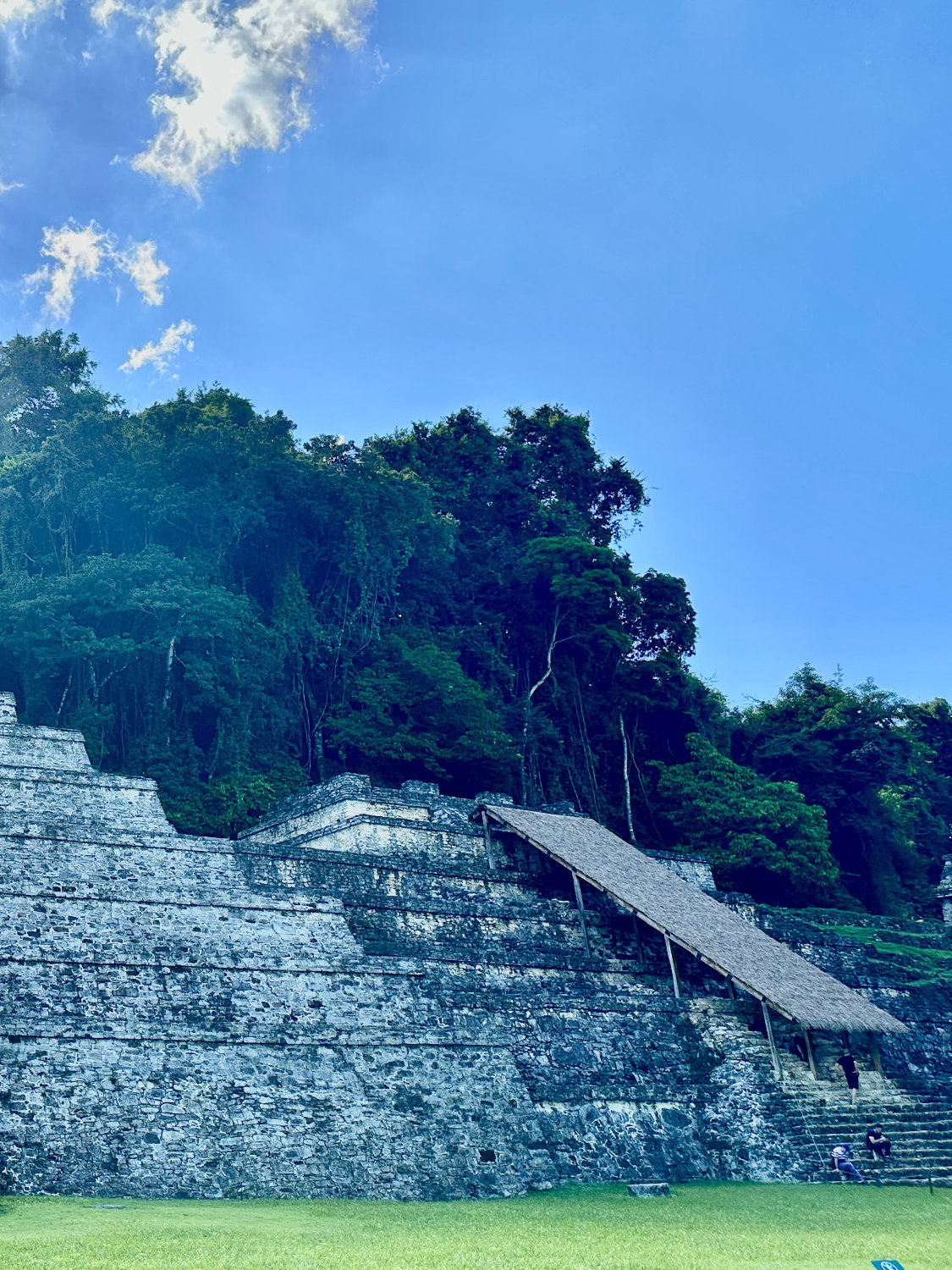
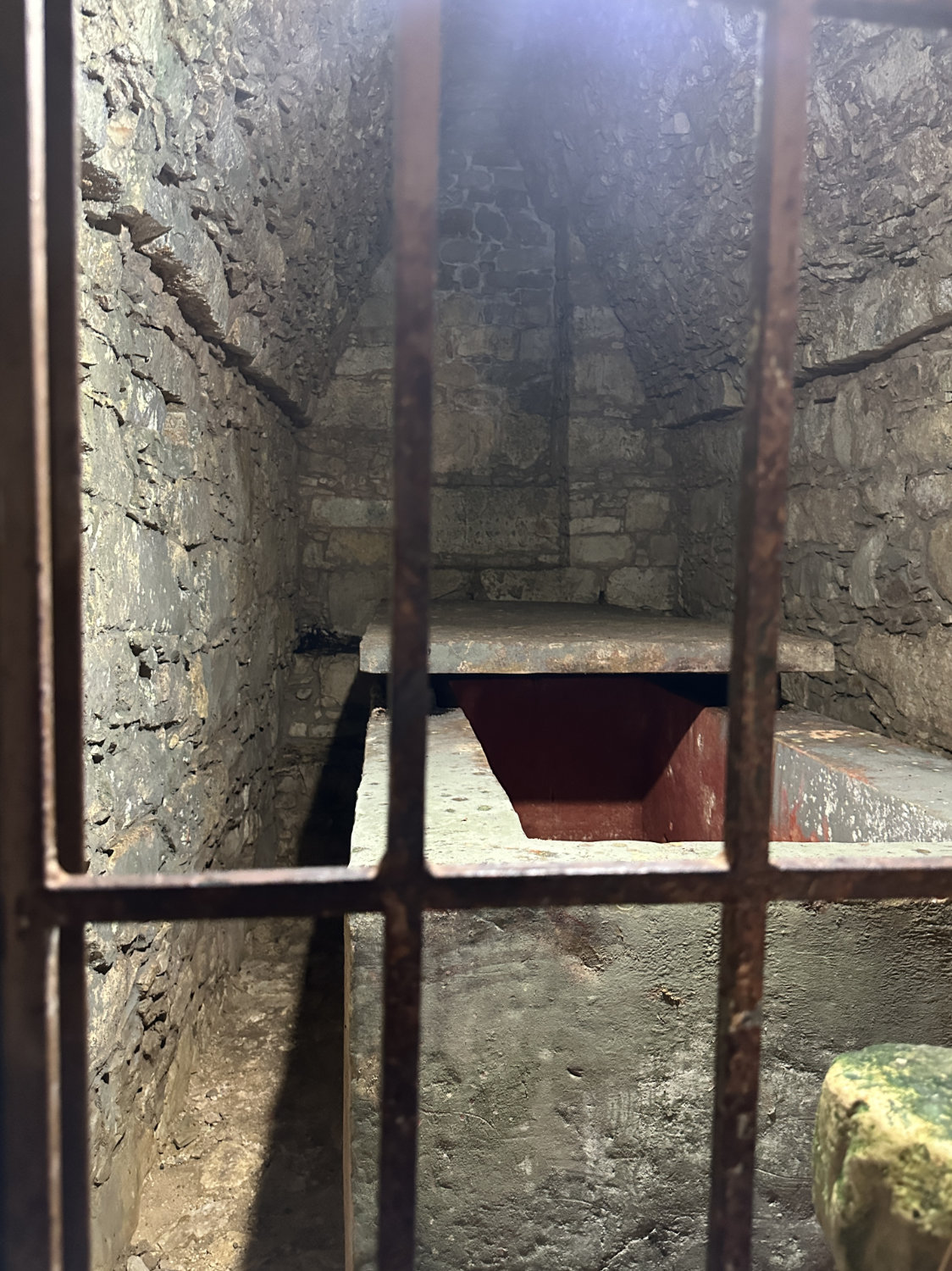
The Ball Court
While not as large as those at other sites, Palenque’s ball court is beautifully proportioned and features some interesting acoustic properties - a whisper at one end can be heard clearly at the other.
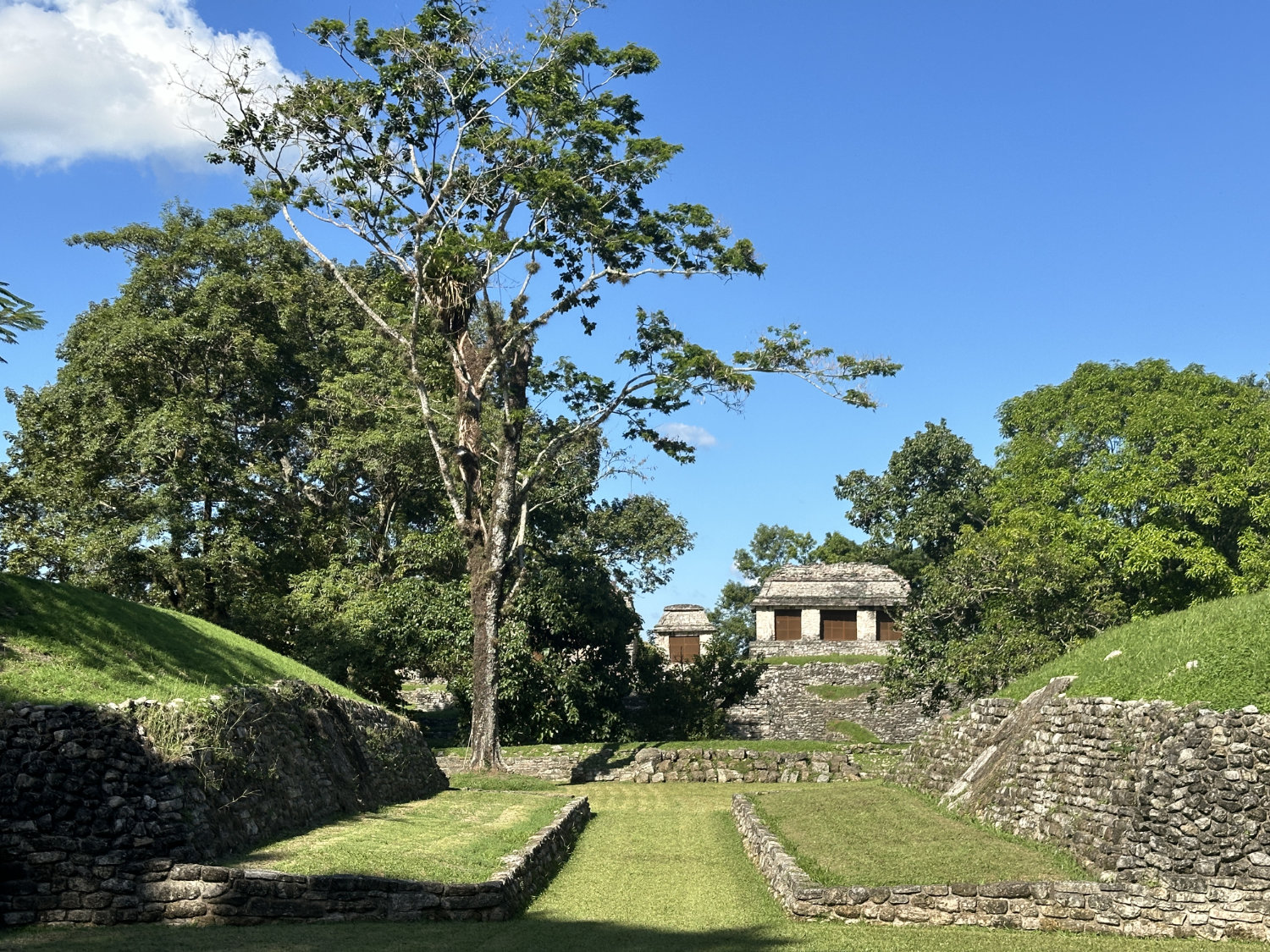
The Natural Setting
What makes Palenque particularly special is its setting. The site is built on a series of natural terraces overlooking the plains below, with cascading waterfalls and streams throughout. The jungle here is alive with wildlife:
- Howler monkeys in the canopy
- Toucans and other tropical birds
- Brilliant blue morpho butterflies
- Various lizard species
- Leaf-cutter ants busy at work
The Site Museum
The Palenque Site Museum (Museo de Sitio de Palenque “Alberto Ruz Lhuillier”) houses an impressive collection of artifacts discovered during excavations. Some notable exhibits include:
- A full-scale replica of Pakal’s tomb and sarcophagus
- Original stone carvings and architectural elements
- Maya ceramic vessels and ritual objects
- Jade masks and ornaments found in royal burials
- Informative displays about Maya daily life and customs
The museum provides valuable context for understanding the archaeological site and helps visitors visualize how Palenque would have looked during its peak.
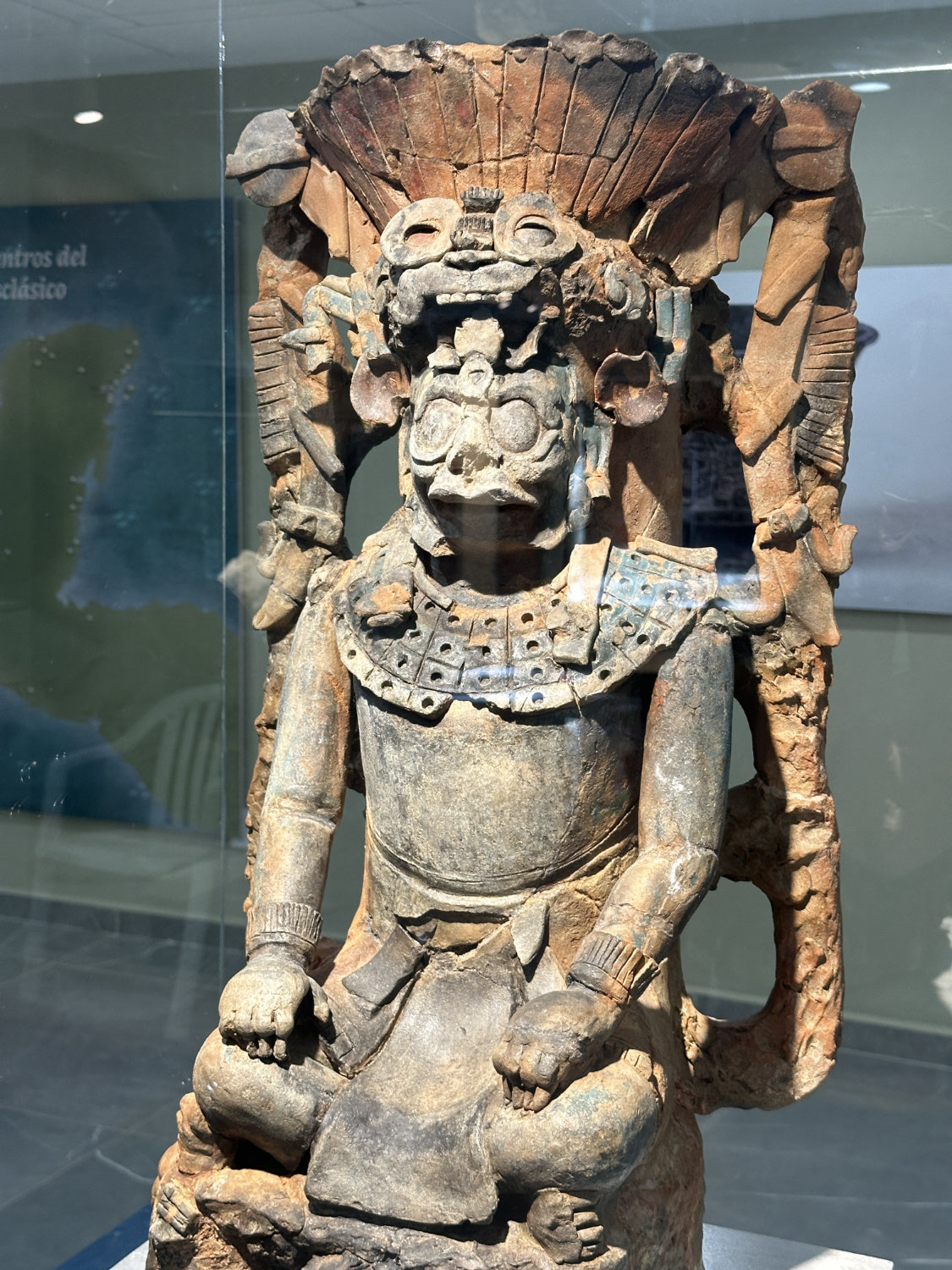


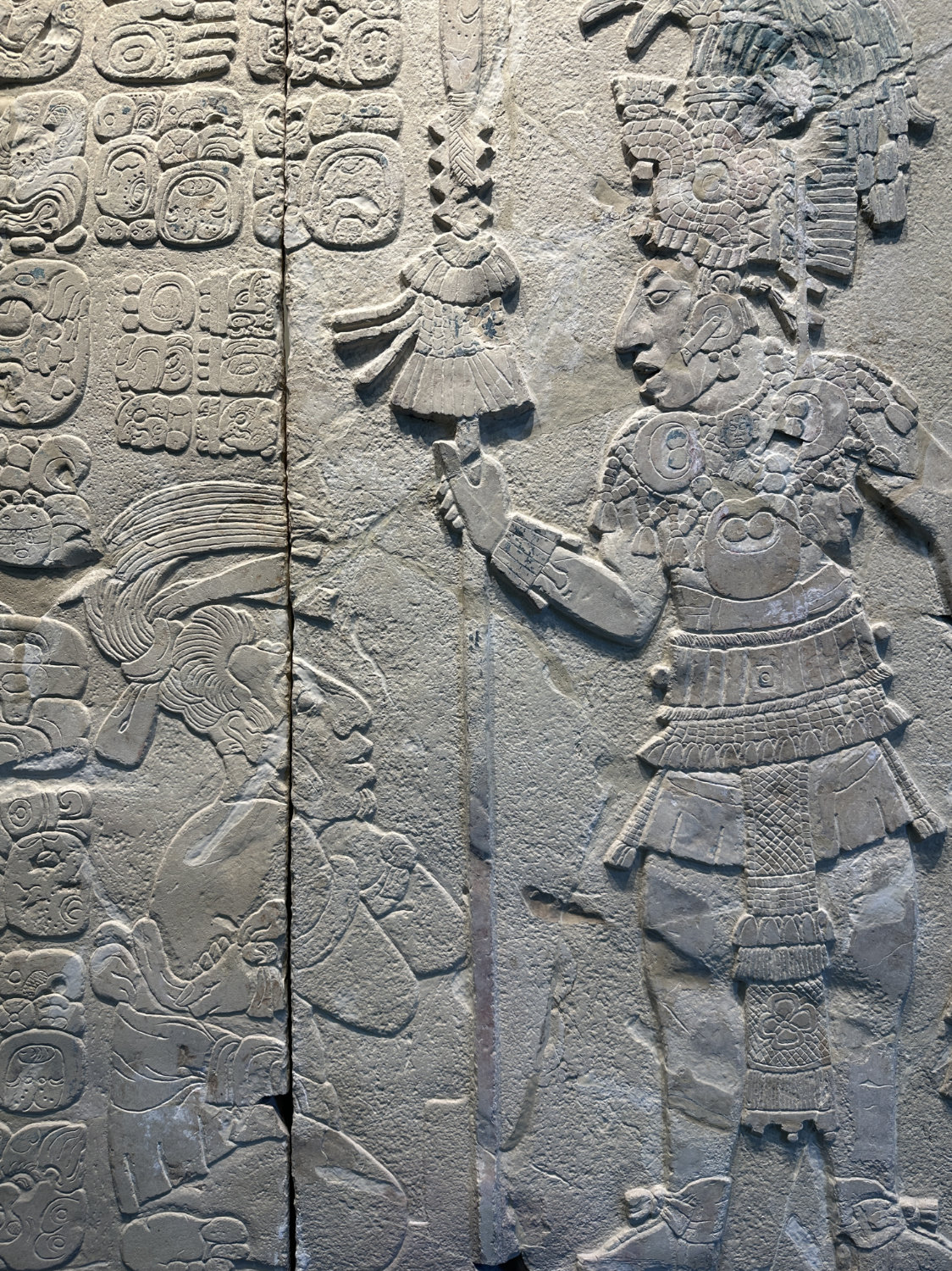
The Jungle Path
Between the main archaeological zone and the museum, a scenic jungle trail offers a peaceful walk through the natural environment. This path features:
- Small cascading waterfalls
- Natural pools formed by the streams
- Dense tropical vegetation
- Opportunities for bird watching
- A cooler, shaded alternative to the main paths
The walk takes about 15-20 minutes and provides a perfect break between exploring the ruins and visiting the museum. Remember to wear appropriate footwear as the path can be slippery, especially after rain.
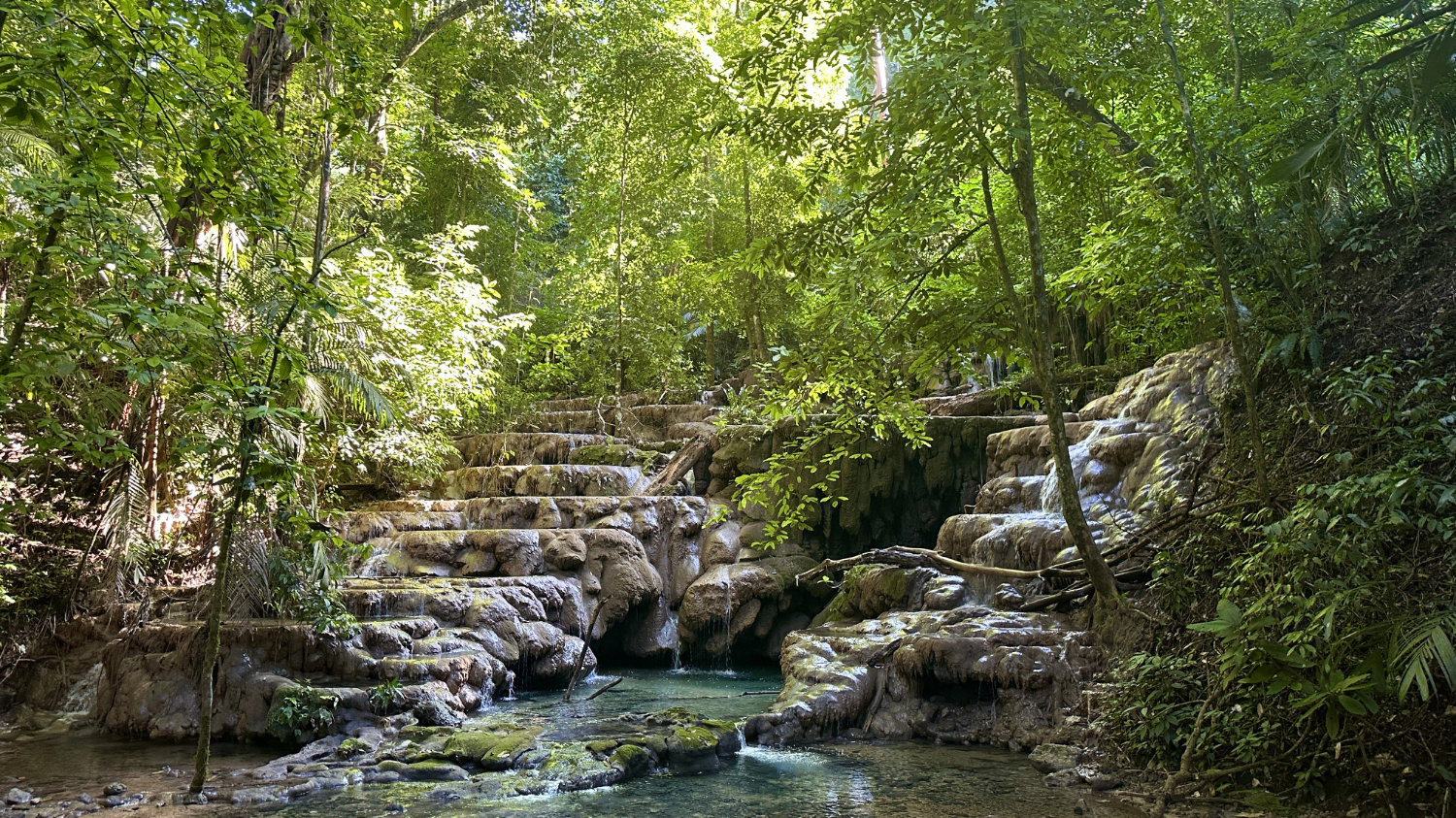

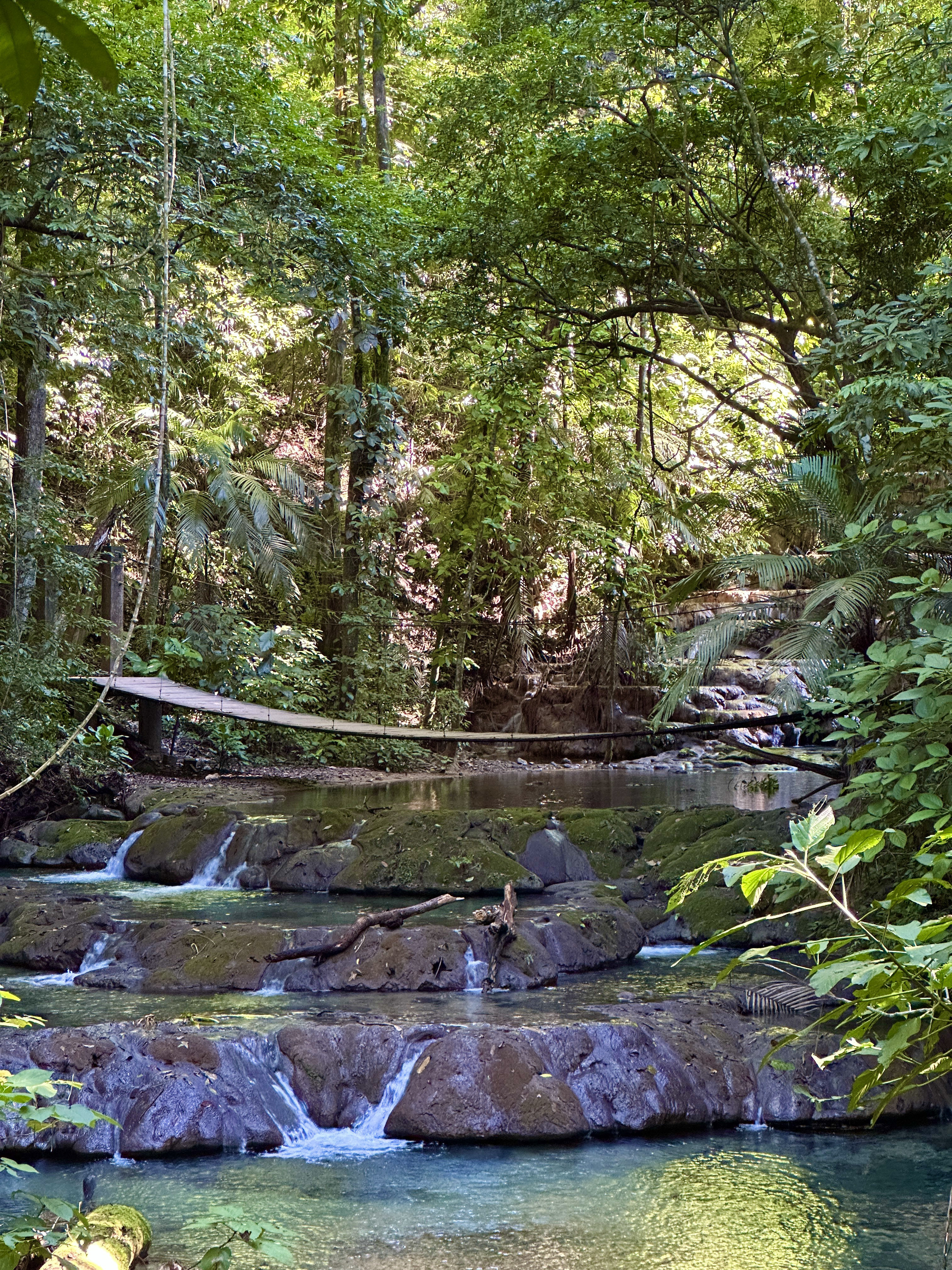
Practical Tips
Best Time to Visit
- Early Morning: Fewer people and better light for photos
- Dry Season: November to April offers most reliable weather
- Allow Time: Full day recommended to explore properly
What to Bring
- Comfortable walking shoes (lots of climbing)
- Water (it gets hot and humid)
- Rain gear (weather can change quickly)
- Camera
- Hat and sunscreen
- Insect repellent
- Small backpack
- Cash for entrance fees
Getting Around
The site is extensive, with significant elevation changes. Main pathways are well-maintained, but some areas require climbing steep stairs. Take your time and stay hydrated - the humidity can be intense.
Conservation and Respect
As with all archaeological sites, it’s crucial to:
- Stay on marked paths
- Don’t climb on restricted structures
- Take only photos
- Respect wildlife
- Follow guide instructions
- Pack out what you pack in
Final Thoughts
Palenque represents the height of Maya architectural achievement. While it may be more “touristy” than Yaxchilan or Bonampak , it deserves every bit of attention it gets. The sophistication of its architecture, the beauty of its sculpture, and the ingenuity of its engineering all come together to create something truly extraordinary.
What struck me most about Palenque was how it balances grandeur with detail. Yes, the temples are impressive from afar, but it’s the small things - a perfectly carved hieroglyph, an elegant architectural detail, or the sound of water flowing through ancient channels - that really bring the site to life.
Frequently Asked Questions
How much time do you need at Palenque? A full day is recommended to properly explore the site. Early morning visits are best to avoid crowds and heat.
Can you climb the temples? Some structures are open for climbing, while others are restricted. Always follow posted signs and guide instructions.
Is Palenque worth visiting? Absolutely - it’s considered one of the finest examples of Maya architecture and engineering in existence.
What’s the best time of year to visit? The dry season (November-April) offers the most reliable weather conditions.
Should you get a guide? Yes - the site is large and complex, and a knowledgeable guide can help you understand its historical significance and architectural details.

